Victor David Hanson in City Journal: (Autumn 2001)
 From the very first moments of the World Trade Center horror, the valor and élan of New York’s firemen, together with that of the city’s police and emergency forces, have transfixed the whole nation—especially us in rural America who rarely see the real Gotham. Danger was nothing to them, courage and honor everything. They responded instantly to the explosion and fire, all drawn to, rather than repelled by, the inferno—and without regard to their own safety or the consequences of their possible incineration upon their loved ones at home. We now know their last radio cries: “Move away from the towers! Everyone move away from the towers!” Silence. . . .
From the very first moments of the World Trade Center horror, the valor and élan of New York’s firemen, together with that of the city’s police and emergency forces, have transfixed the whole nation—especially us in rural America who rarely see the real Gotham. Danger was nothing to them, courage and honor everything. They responded instantly to the explosion and fire, all drawn to, rather than repelled by, the inferno—and without regard to their own safety or the consequences of their possible incineration upon their loved ones at home. We now know their last radio cries: “Move away from the towers! Everyone move away from the towers!” Silence. . . .
As the ghastly rubble gets turned over, we find their remains in clusters—four incinerated here, ten buried there, 14 caught en masse in a stairwell, where they had guided the panicked down as they themselves ascended to their deaths: “All nonessential personnel move away from that building!” The antithesis, left unsaid, is obvious: “All necessary rescuers get into that building!”
So many of them disappeared—at least 388 firefighters—because in a heartbeat they chose to race into the flames and smoke rather than to hesitate and accept the obvious: that the towers were already death traps. In the tradition of all great American armies in battle, officers—47 lieutenants, 20 captains, and 21 chiefs—died alongside the rank and file, heroic death requiring no prerequisite of class or color. Indeed, the magnitude of the terrorist-inflicted disaster rivaled that of a fierce battle, where the enemy overruns and annihilates an entire military unit—paramedics, a fire marshal, even the fire department’s chaplain were engulfed. Remarkably, moments after the buildings collapsed, there were even more rescue workers on the scene than before. It is human to flee from a place of death; the firemen and the police were almost inhuman in mounting so quickly the rubble that buried their brethren.
More here.

 These Black heroes of 9/11 valiantly battled terrorism. But the sacrifices of these Black heroes will receive no recognition during the commemorations around America for the 20th Anniversary of what is considered the most tragic terrorist attack ever conducted on America soil. These heroes, William Parker and his colleagues, confronted terrorists on 9/11 in defense of freedom and liberty – professed pillars of democracy in America. Although badly outnumbered, these Black heroes successfully battled the armed terrorists whose onslaught included threats to employ a weapon of massive destruction. While the anti-terrorism actions of Parker and his band of Black heroes did occur on 9/11 those actions did not occur on ‘that’ 9/11.
These Black heroes of 9/11 valiantly battled terrorism. But the sacrifices of these Black heroes will receive no recognition during the commemorations around America for the 20th Anniversary of what is considered the most tragic terrorist attack ever conducted on America soil. These heroes, William Parker and his colleagues, confronted terrorists on 9/11 in defense of freedom and liberty – professed pillars of democracy in America. Although badly outnumbered, these Black heroes successfully battled the armed terrorists whose onslaught included threats to employ a weapon of massive destruction. While the anti-terrorism actions of Parker and his band of Black heroes did occur on 9/11 those actions did not occur on ‘that’ 9/11.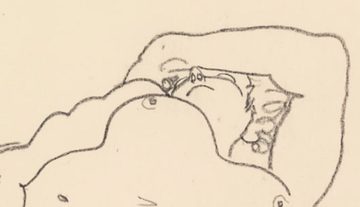 You don’t have to look far in 2021 to come across the celebratory rhetoric of women’s sexual empowerment. Were it not for ongoing reports of sexual harassment and abuse in the wake of the #MeToo movement, it might appear at a glance that we now live in a fully liberated era of sexuality for women, the culmination of decades of feminist progress. In addition to popular new guides to women’s sexual pleasure like OMGyes, recent years have seen the mainstreaming of porn by and for women by figures like Erika Lust; the popularization of sex therapy; the rise of posh, ticketed, women’s-only sex parties; the ongoing proliferation of sex toys for women; and the diversification of sexual pleasure for lesbian, bi, and trans women — all accompanied by an insistence that closing the so-called “orgasm gap” is now within reach.
You don’t have to look far in 2021 to come across the celebratory rhetoric of women’s sexual empowerment. Were it not for ongoing reports of sexual harassment and abuse in the wake of the #MeToo movement, it might appear at a glance that we now live in a fully liberated era of sexuality for women, the culmination of decades of feminist progress. In addition to popular new guides to women’s sexual pleasure like OMGyes, recent years have seen the mainstreaming of porn by and for women by figures like Erika Lust; the popularization of sex therapy; the rise of posh, ticketed, women’s-only sex parties; the ongoing proliferation of sex toys for women; and the diversification of sexual pleasure for lesbian, bi, and trans women — all accompanied by an insistence that closing the so-called “orgasm gap” is now within reach. The remains, belonging to a teenager nicknamed Bessé, were discovered in the Leang Panninge cave on the Indonesian island of Sulawesi. Initial excavations were undertaken in 2015.
The remains, belonging to a teenager nicknamed Bessé, were discovered in the Leang Panninge cave on the Indonesian island of Sulawesi. Initial excavations were undertaken in 2015.
 Close your eyes and imagine stalks of barley and corn waving gently against a butterscotch-coloured sky under the light of Phobos and Deimos — on the ruddy plains of a terraformed Mars! Although this science fiction fantasy has been re-imagined many times in cinema and print, the following recent studies bring this make-believe scenario infinitesimally closer to the realm of credibility. But more urgently, these studies begin to address potential solutions for alleviating pressures arising from agricultural burdens and climate change on our own planet.
Close your eyes and imagine stalks of barley and corn waving gently against a butterscotch-coloured sky under the light of Phobos and Deimos — on the ruddy plains of a terraformed Mars! Although this science fiction fantasy has been re-imagined many times in cinema and print, the following recent studies bring this make-believe scenario infinitesimally closer to the realm of credibility. But more urgently, these studies begin to address potential solutions for alleviating pressures arising from agricultural burdens and climate change on our own planet.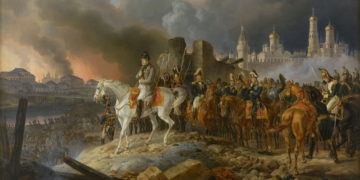 It would take Tolstoy some time to sound the alarm that humanitarianism could entrench war. On the way to doing so, he had one of his most famous characters embrace the inverse proposition: brutality can make it rare.
It would take Tolstoy some time to sound the alarm that humanitarianism could entrench war. On the way to doing so, he had one of his most famous characters embrace the inverse proposition: brutality can make it rare. Books that I feel drawn to and reread, War and Peace among them, are full of uncommon sense and common nonsense. (Uncommon nonsense makes exhilarating literature, too, in Lewis Carroll’s case, but uncommon nonsense does better to stay uncommon: in less skillful hands, it becomes caprice or parody.)
Books that I feel drawn to and reread, War and Peace among them, are full of uncommon sense and common nonsense. (Uncommon nonsense makes exhilarating literature, too, in Lewis Carroll’s case, but uncommon nonsense does better to stay uncommon: in less skillful hands, it becomes caprice or parody.)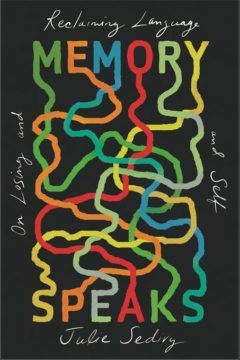 It’s a truism that language is integral to identity. So when our relationship with it changes, complications quickly accrue: Do we become someone different in another tongue? Is that all down to culture and context, or is there something inherent in a language that affects who we feel ourselves to be? And what happens when we start our lives speaking one language but then switch to another?
It’s a truism that language is integral to identity. So when our relationship with it changes, complications quickly accrue: Do we become someone different in another tongue? Is that all down to culture and context, or is there something inherent in a language that affects who we feel ourselves to be? And what happens when we start our lives speaking one language but then switch to another?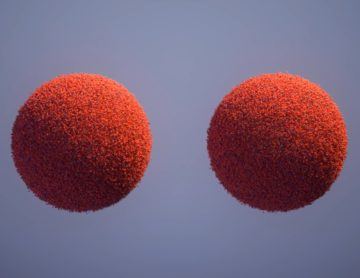 Imagine two friends hiking in the woods. They grow hungry and decide to split an apple, but half an apple feels meager. Then one of them remembers one of the strangest ideas she’s ever encountered. It’s a mathematical theorem involving infinity that makes it possible, at least in principle, to turn one apple into two.
Imagine two friends hiking in the woods. They grow hungry and decide to split an apple, but half an apple feels meager. Then one of them remembers one of the strangest ideas she’s ever encountered. It’s a mathematical theorem involving infinity that makes it possible, at least in principle, to turn one apple into two. The world is only starting to grapple with how profound the artificial-intelligence revolution will be. AI technologies will create waves of progress in critical infrastructure, commerce, transportation, health, education, financial markets, food production, and environmental sustainability. Successful adoption of AI will drive economies, reshape societies, and determine which countries set the rules for the coming century.
The world is only starting to grapple with how profound the artificial-intelligence revolution will be. AI technologies will create waves of progress in critical infrastructure, commerce, transportation, health, education, financial markets, food production, and environmental sustainability. Successful adoption of AI will drive economies, reshape societies, and determine which countries set the rules for the coming century.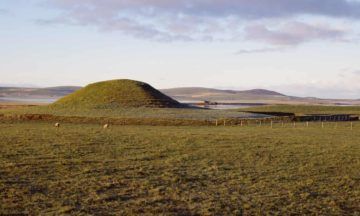 Throughout history, the idea of islands where women rule has been part mythological wish fulfilment, part male fantasy – and part cultural-geographical reality. In 2017 I moved to Orkney, an archipelago still dominated, as all of Britain once was, by its monumental neolithic architecture. Early one spring morning I visited the chambered
Throughout history, the idea of islands where women rule has been part mythological wish fulfilment, part male fantasy – and part cultural-geographical reality. In 2017 I moved to Orkney, an archipelago still dominated, as all of Britain once was, by its monumental neolithic architecture. Early one spring morning I visited the chambered 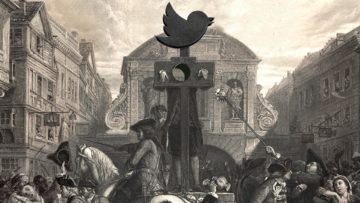 “I
“I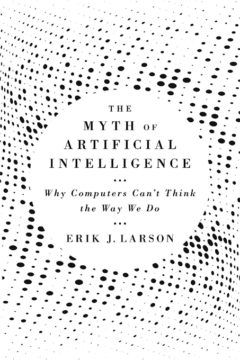 To be even remotely plausible, a computer model of the human mind must warp — and restrict — our commonsense definitions of intelligence, knowledge, understanding, and action. Larson discusses the renowned computer scientist Stuart Russell, who
To be even remotely plausible, a computer model of the human mind must warp — and restrict — our commonsense definitions of intelligence, knowledge, understanding, and action. Larson discusses the renowned computer scientist Stuart Russell, who  “We never said the welfare state is a substitute for socialism.” This staple of Harrington’s lecture tours had a flipside, his retort to old-school socialists: “Any idiot can nationalize a bank.” He said both things frequently after Mitterrand retreated. Harrington relied on his core message: bureaucratic collectivism is an unavoidable reality. The question is whether it can be wrested into a democratic and ethically decent form. Freedom will survive the ascendance of globalized markets and corporations only if it achieves economic democracy. Harrington had long argued that the market should operate within a plan, but in the mid-1980s his actual position shifted to the opposite. He conceived planning within a market framework on the model of Swedish and German social democracy—solidarity wages, full employment, co-determination, and collective worker funds. To many critics that smacked of selling out socialism. He replied: “To think that ‘socialization’ is a panacea is to ignore the socialist history of the twentieth century, including the experience of France under Mitterrand. I am for worker- and community-controlled ownership and for an immediate and practical program for full employment which approximates as much of that ideal as possible. No more. No less.”
“We never said the welfare state is a substitute for socialism.” This staple of Harrington’s lecture tours had a flipside, his retort to old-school socialists: “Any idiot can nationalize a bank.” He said both things frequently after Mitterrand retreated. Harrington relied on his core message: bureaucratic collectivism is an unavoidable reality. The question is whether it can be wrested into a democratic and ethically decent form. Freedom will survive the ascendance of globalized markets and corporations only if it achieves economic democracy. Harrington had long argued that the market should operate within a plan, but in the mid-1980s his actual position shifted to the opposite. He conceived planning within a market framework on the model of Swedish and German social democracy—solidarity wages, full employment, co-determination, and collective worker funds. To many critics that smacked of selling out socialism. He replied: “To think that ‘socialization’ is a panacea is to ignore the socialist history of the twentieth century, including the experience of France under Mitterrand. I am for worker- and community-controlled ownership and for an immediate and practical program for full employment which approximates as much of that ideal as possible. No more. No less.”